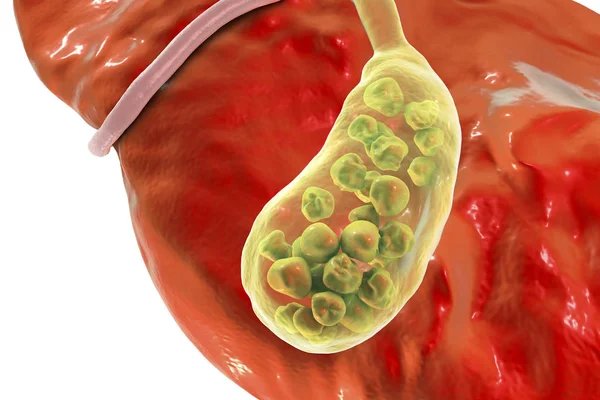Introduction:

Gallstones are a common medical condition affecting millions of people worldwide. These small, hard deposits that form in the gallbladder can cause significant discomfort and may lead to complications if left untreated. In this article, we will explore the causes, symptoms, and treatment options for gallstones, providing you with a comprehensive understanding of this condition.
What are Gallstones?
Gallstones are solid deposits that develop in the gallbladder, a small pear-shaped organ located beneath the liver. They are primarily composed of cholesterol, bilirubin, and calcium salts. Gallstones can vary in size and number, ranging from tiny grains to large stones that can fill the gallbladder.
Causes of cholelithiasis:
Several factors contribute to the formation of gallstones, including:
a) Excess Cholesterol: When the liver produces more cholesterol than the bile can dissolve, it can lead to the formation of cholesterol gallstones.
b) Excess Bilirubin: Conditions that increase the breakdown of red blood cells or disrupt the liver’s processing of bilirubin can result in pigment gallstones.
c) Concentrated Bile: When bile becomes overly concentrated due to insufficient emptying of the gallbladder, it can contribute to stone formation.
d) Gallbladder Dysfunction: A sluggish gallbladder that doesn’t empty properly or doesn’t empty at all can promote gallstone development.
Symptoms of Gallstones:
In many cases, gallstones do not cause any noticeable symptoms and may be discovered incidentally during medical tests. However, when a gallstone obstructs a bile duct, it can lead to the following symptoms:
a) Intense abdominal pain in the upper right portion or center of the abdomen, known as biliary colic.
b) Back pain between the shoulder blades.
c) Nausea, vomiting, or indigestion.
d) Jaundice (yellowing of the skin and eyes) if the stone blocks the bile duct.
Diagnosis and Treatment:
To diagnose gallstones, healthcare professionals may use various imaging techniques, such as ultrasound, CT scan, or MRI. Treatment options depend on the severity of symptoms and complications, if any. They include:
a) Watchful Waiting: If gallstones are small and not causing any symptoms, a “wait and see” approach may be taken.
b) Medications: Certain medications can be prescribed to dissolve cholesterol gallstones, but it is a slow and less commonly used method.
c) Surgical Intervention: The most common treatment is laparoscopic cholecystectomy, a minimally invasive surgery to remove the gallbladder. It is typically a safe and effective solution.
d) Endoscopic Procedures: In some cases, endoscopic procedures like ERCP (endoscopic retrograde cholangiopancreatography) or ESWL (extracorporeal shock wave lithotripsy) may be performed to remove or break down gallstones.
Prevention and Lifestyle Modifications:
While it may not be possible to prevent all cases of gallstones, certain lifestyle modifications can reduce the risk: a) Maintain a healthy weight and avoid rapid weight loss or crash diets.
b) Eat a balanced diet rich in fruits, vegetables, and whole grains, and low in saturated fats and cholesterol.
c) Stay physically active and exercise regularly.
d) Avoid or limit the consumption of alcohol and sugary beverages.
Conclusion:
Gallstones are a common condition that can cause significant discomfort and complications if left untreated. Understanding the causes, recognizing the symptoms, and knowing the available treatment options are essential for managing this condition effectively. By making certain lifestyle changes and seeking medical intervention when necessary, individuals can reduce the risk and ensure better gallbladder health in the long run. Remember, early diagnosis and appropriate treatment are key to preventing complications and promoting a healthier life.

